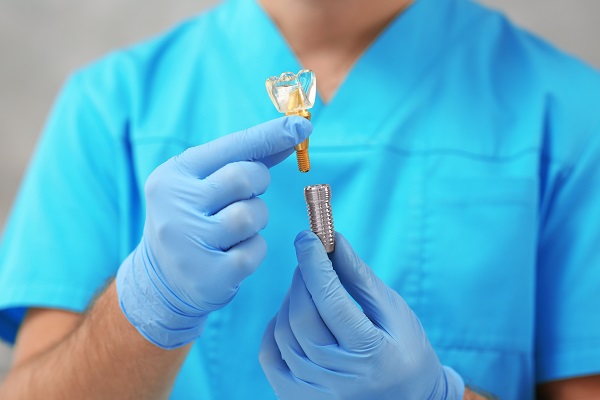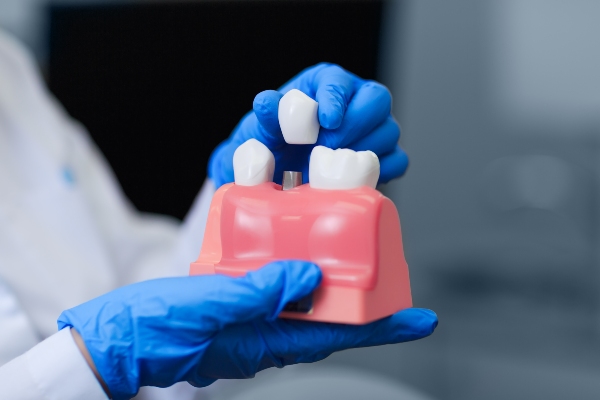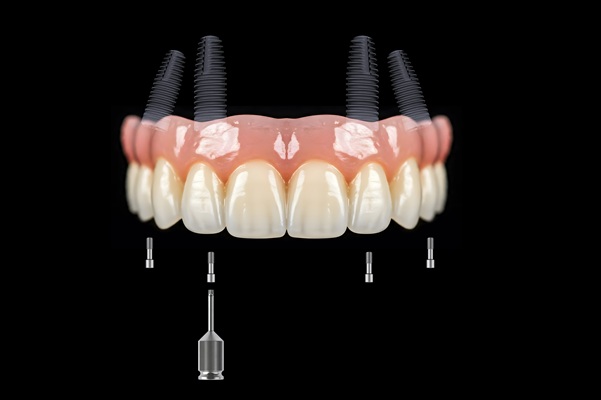Tooth Replacement – The Steps for a Dental Implant Procedure

One of the most common treatment options for missing teeth is the dental implant. This permanent replacement has a natural appearance and feel that mimics real teeth. Implants are typically done for patients who have lost teeth due to severe disease and decay as well as injury.
Dental implant procedure steps
Patients who plan on getting implants may have questions regarding this tooth replacement option. The procedure for dental implants involves multiple steps that are usually performed over a period of time.
Consultation
The first step for the dental implant procedure involves a thorough oral and overall health assessment by a dentist to ensure a patient is a good candidate for implants. The vast majority of people can get dental implants; however, there are some patients who do not qualify. Patients who smoke, have untreated gum disease, or have uncontrolled diabetes are at risk of complications from the procedure. If a patient's jawbone is not strong enough for implants, they may need bone grafting prior to the implant surgery.
Surgery
Once a dentist has determined that a patient is a good candidate for implants, the first part of the implant placement procedure can be done. This involves placing a titanium implant into the jawbone to act as a tooth's root. A temporary crown may be placed afterward. After the implant is placed, patients need to wait around four to six months for the mouth to heal and for osseointegration to complete. Osseointegration is the process in which the jawbone grows and fuses with the implant to provide a stable base that works the same as a natural tooth's root does.
After the healing process and osseointegration has completed, an abutment is placed. This is a connector that attaches to the implant and provides the base for the crown to be adhered to. The procedure for the abutment involves reopening the gum and attaching it to the implant. The healing process for this usually takes about two weeks. A crown is then manufactured and attached to the abutment to serve as the replacement tooth.
Post surgery
After the dental implant procedure is complete, patients may experience some swelling in the gums and face, as well as minor bleeding and pain. These are typically mild and last for a short amount of time after surgery. Over-the-counter medications can help with any discomfort. Dentists recommend soft food in the days following treatment.
It is important for patients to maintain proper oral hygiene and schedule routine dental appointments after receiving implants. Patients should be careful and avoid eating hard foods or chewing ice as this can possibly crack a crown. It is also recommended to limit the consumption of foods and beverages that stain teeth.
Conclusion
Dental implants are a great treatment option for patients with missing teeth and help to restore a beautiful and healthy smile. While the procedure takes some time to complete, results can last for a patient's lifetime.
Request an appointment here: https://www.torreyhillsperio.com or call Torrey Hills Periodontal Group at (858) 925-1188 for an appointment in our San Diego office.
Check out what others are saying about our dental services on Yelp: Dental Implant in San Diego, CA.
Recent Posts
A patient will need to get dental implant surgery if they are looking to replace one or more teeth with implants. Implants are one of the popular ways to replace missing teeth. They make for an artificial tooth that looks and feels just like a real one. An implant also provides other benefits: It is…
Appearance may be one of the first things people think about when it comes to tooth replacement. However, improved appearance is just one of the many benefits of replacing missing teeth. Tooth replacement can be key to improving not only how you feel about your smile but also boosting your oral health.Whether one chooses dentures,…
More and more people are turning to implant supported dentures for full and partial tooth replacement. This option's continued rise in popularity is due to its impressive success rate and other key benefits. If you are exploring your tooth replacement options, there are unique advantages to choosing implant supported dentures.As the name suggests, implant supported…
An oral surgeon might recommend the sinus lift procedure if your jawbone needs to be built up so it can hold dental implants. Also known as a sinus bone graft, the treatment is used to build bone tissues in the upper jaw. Oral surgeons or periodontists typically perform the procedure. Patients need to be fully…


